‘Journalism is sacred work’: Afghanistan’s front line reporters
Afghanistan ranks as one of the world’s worst countries for journalism. Yet despite targeted killings and an uncertain future, reporters are not turning away from the profession.
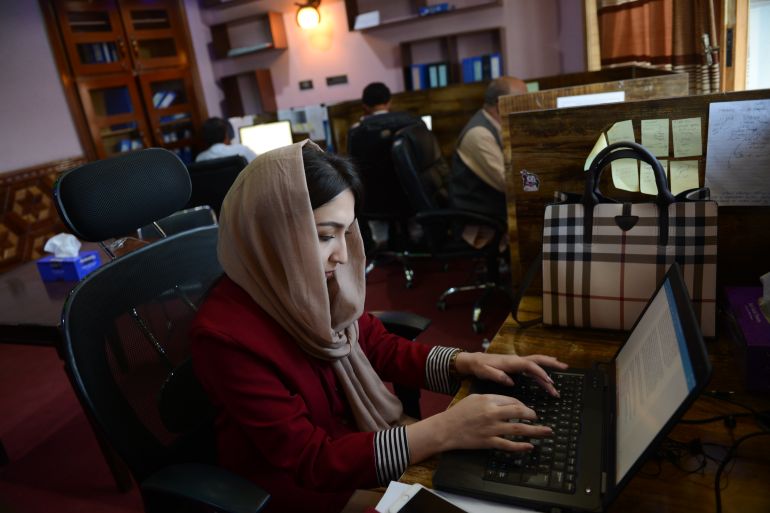
Kabul, Afghanistan – It was about 8am on a Monday morning in April 2018 when Bushra Seddique felt the multi-storey apartment building she was living in with her family in Kabul’s Shash Darak district shake. Smoke billowed from the street below.
She barely had time to process what was happening as her father rushed the family out of the house, past the injured and the dead, but she remembers seeing journalists running, cameras in hand, towards the scene of the explosion.
Keep reading
list of 4 itemsThe keeper of Afghanistan’s poetic past
What will become of Afghanistan’s economy once the US leaves?
Will the Taliban sweep Afghanistan?
Half an hour later, a second explosion went off; nine reporters who had arrived at the initial blast site were killed.
It was the first time Seddique, who is now 21, had witnessed the dangers Afghan journalists face. “It was traumatic, but inspiring to see their bravery and commitment,” she says.
At the time Seddique was in the second year of her journalism programme at Kabul University. She has now graduated and is embarking on her career with a mixture of determination and trepidation.
“Over the last few years, we have lost many journalists to bombings and targeted killings, and this is tragic and scary,” she explains. “It’s disappointing for me and anyone trying to grow their experience as a reporter.
“But I still want to continue,” she adds. “By choosing to pursue journalism, I already accepted the barriers and difficulties of working in this field in this country.”
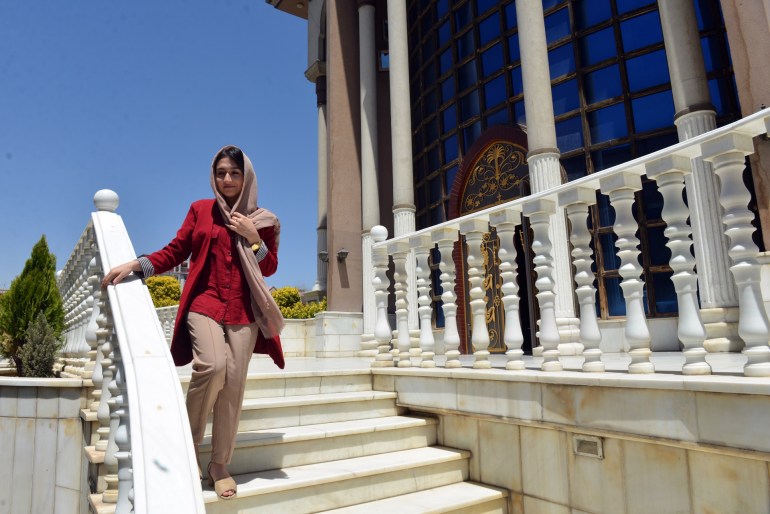
Seddique understands why, despite the inherent dangers, Afghan journalists continue to pursue this career. She wants the world to see Afghanistan as more than just a conflict zone and hopes, through her journalism, to offer an alternative to the typical portrayals of her country in Western media.
“Afghanistan has so much ancient history and a vast wealth of culture. I want to tell untold stories of ordinary people,” she says.
“I believe that journalism is not just a job or subject,” she adds, emphatically. “Pursuing journalism is a desire for change and to help.”
A risky profession
Journalism is one of the most dangerous professions in the country. According to Reporters Without Borders, at least 85 local Afghan journalists have been killed in connection with their work in the past 20 years. After the Taliban seized control of the country in 1996, journalism went from being severely restricted (as it was during Soviet rule) to almost non-existent. Television sets were destroyed and all TV news channels disappeared overnight. Photos, commentary, and newspaper editorials were banned, and most print and media publications were shut down. Only strict religious radio programming and propaganda news articles for one newspaper – The Islamic Emirate – ran by the Taliban, were permitted.
After the US and NATO invasion of Afghanistan and the toppling of the Taliban, the country experienced a rapid growth in the media sector. Numerous television news stations, radio programmes and more than 1,000 print media sources currently exist in the country.
As a career path, journalism is not something many Afghan families are eager to encourage due to its perceived danger and employment uncertainty. Reporters will often sign employment contracts with domestic media outlets without safety clauses or insurance benefits because of the high unemployment rate. There are also limited positions with well-paying salaries.
In Afghanistan, there is no minimum wage, and each media organisation pays their staff according to their own pay scale. The average income for an Afghan journalist depends on experience, and whether they are working for a domestic or international outlet. Local outlets pay a wage typically ranging from $200 to $1,000 per month, while international outlets can pay between $600 to $3,000 per month. Entry-level graduates are paid at the lowest end of the spectrum.
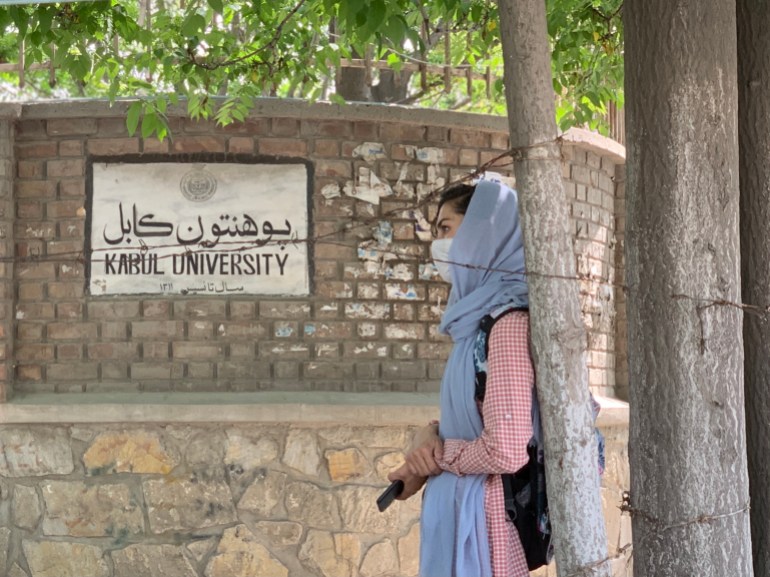
Still, there are 12 state-run universities offering journalism programmes across the country. At Kabul University, where Seddique studied, 1,152 students are enrolled in undergraduate journalism and communications programmes, with an almost 50-50 split between men and women.
“They are pursuing their undergraduate degree with a passion for contributing for the good of this country,” says Abdul Qahar Jawad, an associate professor of Journalism at Kabul University and Seddique’s former academic adviser. However, he admits that journalism is not usually a student’s first choice; it is a career they learn to appreciate with experience and practice.
Seddique understands this because journalism was not her first choice either. She grew up wanting to become a doctor or a lawyer, but in secondary school, her score in the country’s national Kankor university entrance exam process placed her in journalism, her third choice.
All Afghan secondary school students looking for a place at one of the country’s universities must take the Kankor exam. Students compete for spots alongside other candidates from their home province, and their score is the sole determining factor for admission into a university department. Students are allowed to choose five fields in order of preference when they take the national exam, but beyond that the choice of where they are offered a place is not theirs to make. Seddique was not disappointed with her outcome. After all, she had earned a spot at Afghanistan’s top university against a highly competitive pool of applicants.
As an undergraduate, one of the first stories she worked on was about people living in poverty on Sar-e Yakhdan, a remote rocky hill to the west of Kabul. It took a day to travel to and from the mountain.
“I was a student and travelling by myself as a young girl to report a story. In Afghanistan, this is not common behaviour for young women,” she explains apprehensively. “I remember men staring at me with disgust and asking me why I am on the street by myself, some very harshly. I felt insecure and scared.”
Another time, while interning for a national newspaper during her second year at university and working on a story about some of the most crowded marketplaces in the city, she had insults shouted at her by shopkeepers. One of them called the police, who questioned her on the street and subsequently told her to leave the area.
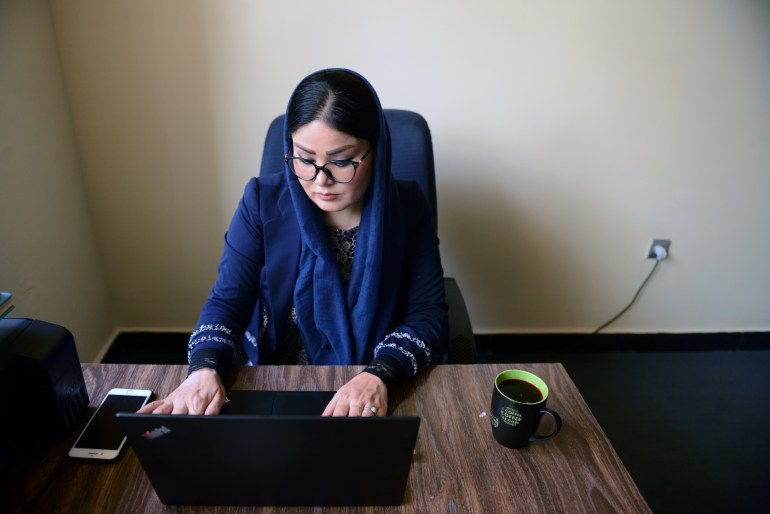
Saleha Soadat, a more experienced Kabul-based reporter, puts such incidents into perspective. “Women don’t have security. During the Taliban era, women were hidden under burqas. After their departure, we re-entered society but were still relatively unseen and persecuted, even sexually harassed,” she explains. “The media space is male-dominant with a negative view towards women. Some men still think that women working in a media outlet are immoral.”
Besides harassment, targeted shootings outside workplaces and homes are a risk, as well as secondary bombs set to detonate after initial attacks with the aim of targeting journalists and rescue crews and increasing the levels of carnage – like the 2018 attack Seddique witnessed from her apartment window that killed nine journalists.
‘Prejudice, inequality and terrifying violence’
Journalists covering conflict must walk a dangerously thin line, balancing threats to their lives from armed groups on the one hand and threats to how they carry out their profession from the government’s security forces on the other. The lines between enabling propaganda, intelligence gathering, and journalism sometimes blur as they relate to reporting and source protection in Afghanistan. Given these types of challenges, many Afghan journalists have become accustomed to a degree of self-censorship as a form of self-preservation.
Some journalists covering Taliban activities, especially those with direct access to members of the group, have been arrested for collaborating with it and spreading propaganda. In other cases, journalists have been forced to work for the intelligence services or face arrest. Then there are those who have been kidnapped or assassinated by the Taliban for supposedly working with the intelligence services.
Targeted killings of journalists by armed groups have increased significantly and continue to rise amid the US and NATO troop withdrawal. Many Afghan journalists have been forced to find ways to flee the country but face challenges in finding a safe refuge even outside of Afghanistan.
Female journalists, in particular, are targeted in record numbers.

According to Soadat, there are only a handful of female journalists. “The split between male and female journalists is roughly 80 to 20. Afghanistan is patriarchal, and journalism is still considered shameful work for women today,” she explains. There are also not enough journalism roles. In 2020, the unemployment rate in Afghanistan was more than 11 percent. Women, whatever their degree or experience, are often overlooked for competitive positions across all industries.
The ongoing targeted killings have left citizens feeling uncertain about the future of the country. According to Kabul-based journalist Zakarya Hassani, there has been a reduction in “freedom of speech, and more fear about what is going on in a critical, historic juncture of Afghanistan”.
There are consequences to this, he says, in the form of “brain drain and loss of hope”, as journalists and others leave the country.
As someone just entering the industry, Seddique reflects upon the consequences of targeted killings. “If the government, the international community is quiet about this violence, and journalists continue to be targeted, then no one will want to work in this field,” she says.
But as a child growing up during the Taliban era, she understood that she was born into a country riddled with challenges. “Even as a child, you know the type of place you come from and what kind of difficulties you face. I knew I had entered a society that faced insecurity, prejudice, gender inequality and terrifying violence,” she says, her joyful demeanour suddenly serious. “I have seen the war with my own eyes, and I want to be part of any efforts to spur change.”
Fuelled by desperation
Seddique’s mentor, Jawad – himself a student-turned-educator of journalism – is helping to foster that mindset. The professor is mild-mannered, formal and reserved, yet gracious and eager to engage in conversation and listen.
He attended Kabul University from 2001 to 2004 and became a professor at the institution afterwards. When he was a student at the university, his department head was a Taliban official. Though they were under strict Taliban rule, “he treated us like humans,” Jawad says, sitting in his office chair with his legs crossed and his hands clasped together, as he reflects on that period.
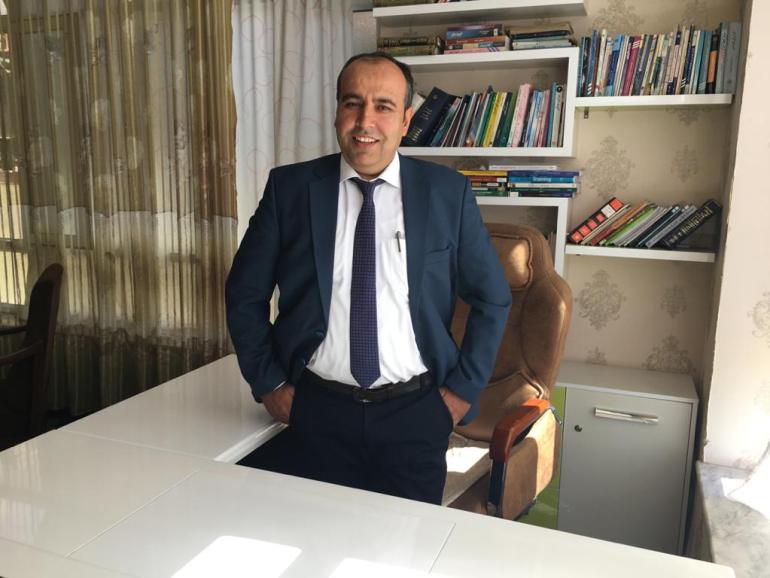
Students were expected to spend 60 percent of their time studying Islamic law and 40 percent on their other subjects. They had no access to computers and had to transcribe lectures by hand. Women were not allowed to study or work, only re-entering classes during his second semester in 2002 when the Taliban had been toppled.
During his tenure as a professor, he was awarded the prestigious Fulbright scholarship, which brought him to the University of Arkansas in the US to complete a Master of Journalism. After he graduated, he decided to return to Afghanistan because he wanted to continue working for the university.
“To be a lecturer at the journalism school guaranteed me an employment opportunity in 2005 after my undergraduate studies. I didn’t see beyond that economic opportunity at the time. But gradually, while teaching, I started appreciating the significance of journalism for my personal career and its social and professional impact. I was empowering younger generations to flourish and to be the eyes and ears of their communities. So I wanted to continue teaching and become part of a fabric that would drive change in my country through journalism,” he says.
He recalls being scolded by relatives for giving up the possibility of potentially staying in the US, but is adamant he made the right decision. His eyebrows furrow as he explains why.
“I came back because I saw an opportunity to be an influencer, to educate a generation that could change the situation that generations, including myself, have grown up in. These are young generations that are eager to learn and bring change for Afghanistan, and perhaps the world,” he says. “I can’t fix all the problems in Afghanistan, but my country needs people who are brought up here to contribute to helping the country.”
He believes in students like Seddique and understands the motivations of those who grew up in conflict.

Jawad lived through both the Soviet and Taliban eras. He recalls walking 16km (10 miles) a day as a child to sell vegetables out of a cart as rockets fell around him. The increasingly violent conflict between Mujahideen groups following the Soviet withdrawal forced him to stop going to school for nine years, and he had to rely on private schooling later in life to catch up on his studies.
“As I was working, I desperately observed other children my age attending schools with notebooks in their hands, as people then could rarely afford to buy school bags,” he recalls. “Sometimes, in these instances, I stopped to think whether my destiny could be different in adulthood if I could continue going back to school.
“This feeling of desperation fuelled me to find partial schooling that would align with my responsibilities to my family. So I attended some small-sized education centres to catch up on my studies in a few subjects like English, mathematics and calligraphy.
“These were baby steps, but they helped a lot when I was able to resume schooling officially. My experiences taught me commitment and resilience. Millions of youth across Afghanistan have faced and still face similar situations. Still, I hope as an educator I can inspire others who are struggling never to give up.”
Today, he oversees a competitive journalism programme (the fifth-largest programme at the state-run university). It accepts only 300 candidates out of the 2,000 who apply annually to the university through the national examination process. He knows the programme still needs advancements, but he sees hope in what it stands for today – in the way it prepares the next generation of Afghan journalists, those who are looking to reframe Afghanistan’s narrative as it enters an uncertain future.
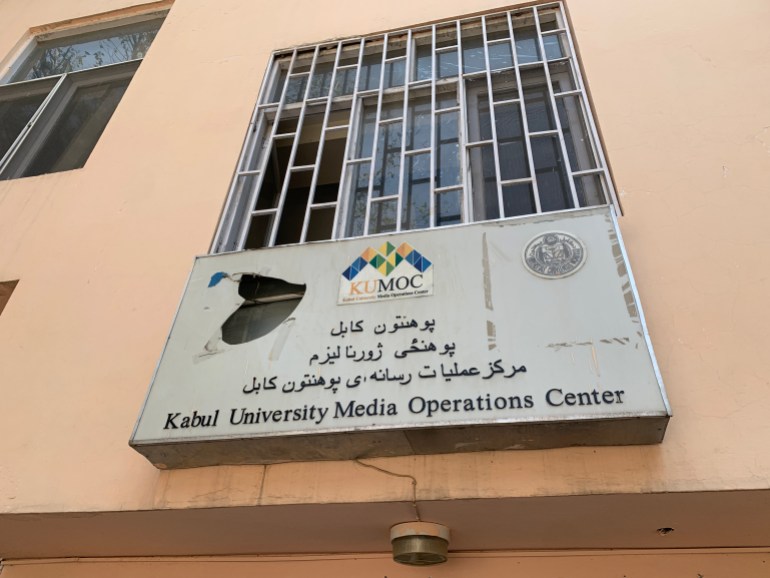
Seddique is part of that generation. She admits that it is sometimes scary for someone who is just starting out in the industry. But she is determined and persistent. She knocks on doors until she gets interviews and works extra hard to research and fact-check because sources often provide her with false information. “If people ignored me, I would return every day until someone spoke to me,” she says.
Seddique, who is ethnic Tajik, credits this mindset to her open-minded family, especially her supportive father, who she says “always believed that a key driver to change in this country is education”. And she draws inspiration from female journalists who have paved the way for her – journalists like Soadat.
‘How can I remain silent?’
At 34, Soadat remembers only violence from her childhood. She grew up in west Kabul during the civil war and was forced to flee her home when it was attacked by an armed group.
While fleeing, she and her sister were injured in a rocket attack. In a panic, her mother covered their wounds with her clothes, and they continued escaping with other relatives underground. These memories and the thought of her mother desperately trying to protect them haunt her to this day.
“In a society that does not even spare children, how can I remain silent and not fulfil my mission as a journalist?” she asks, sitting tall with her hands crossed in her lap.
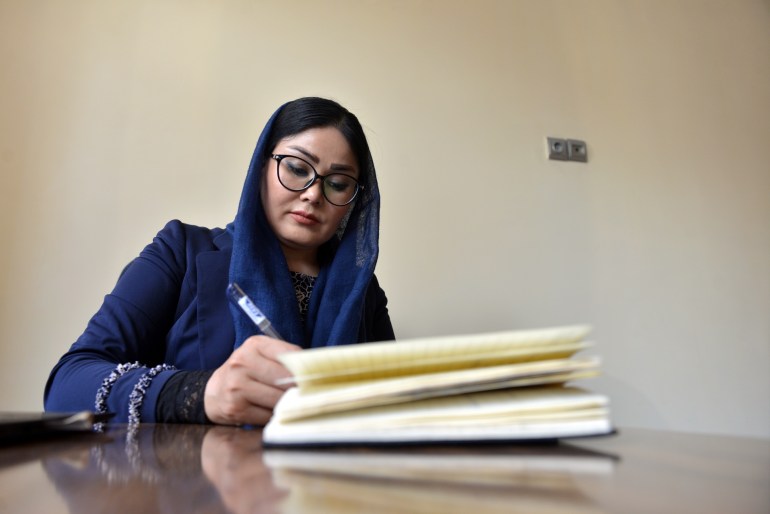
She speaks with confidence and intensity and maintains eye contact with a laser focus behind a pair of black-rimmed glasses. She is formal, yet friendly, energetic and talkative. She started as a reporter for a private radio station.
“I started my career with radio so that only my voice could be heard,” she says, explaining that her family were concerned about her security.
She previously worked for TOLOnews as a senior political reporter, and now works as a freelance journalist.
Soadat is no stranger to discrimination and targeted violence. She is Hazara, one of Afghanistan’s largest ethnic groups, comprising roughly 20 percent of the population of 38 million. Hazaras have been historically and systemically persecuted and discriminated against due to their Shia faith as well as by Afghanistan’s Pashtun- and Tajik-dominated government, despite being granted equal rights in the 2004 Afghanistan Constitution.
Since 2018, there have been more than 50 Taliban and ISIL (ISIS) attacks targeting Hazara civilians everywhere from mosques to hospitals. In May, there was a massacre at a girl’s school in a primarily Hazara community.
Soadat believes that if local journalists, who are closest to the challenges the country faces, do not report on such matters, there will not be progress.
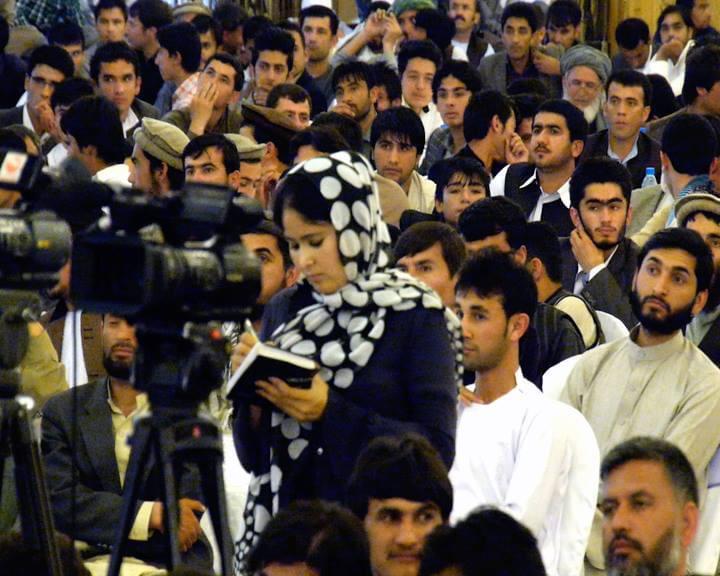
She credits her commitment to journalism to her mother. “As a child, my mother always told me to strive for myself, my family and community. My mother inspired me to be a good human being first, and I think I chose to pursue journalism because of what she taught me.”
She worries about her future and the future of journalism after the US and NATO forces leave.
“Journalists are at the forefront of the country’s struggle because they voice facts. These voices may be to the detriment of the Taliban or the Afghan government, but in either case, they face threats from both sides,” she explains. “The withdrawal of foreign troops will undoubtedly affect the deteriorating security situation.”
But she is not ready to give up and believes the next generation of journalists – those like Seddique – must believe firmly in what they are doing. They have to keep running to the front line, she says, because “journalism is a window to change.
“Here in Afghanistan, it’s dangerous, but journalism is sacred work.”